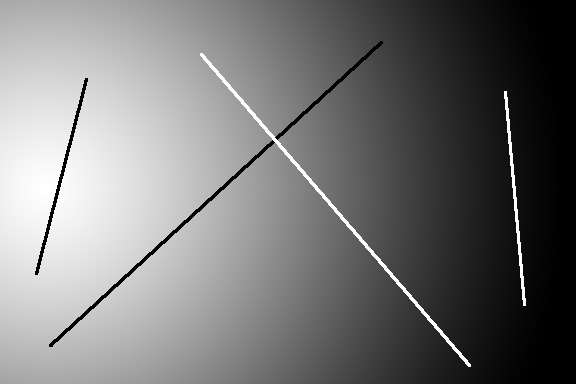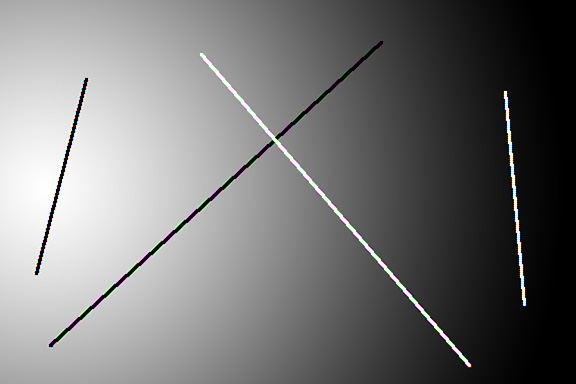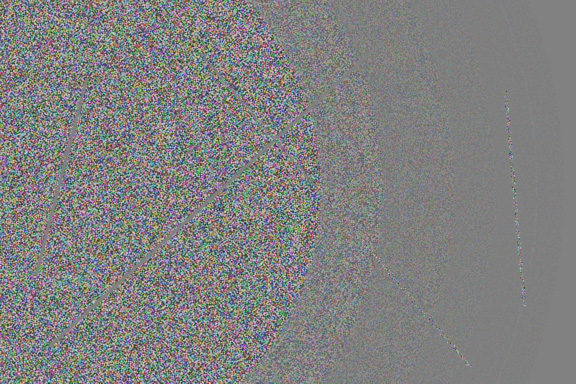Someone expressed interest is seeing how the Sony tone compression/expansion simulation would work with our test image if the delta modulation component were removed, leaving us with only the 13-to-11-bit tone compression and its 11-to-13-bit counterpart.
I’m glad to oblige.
Here’s the target image in Adobe RGB:
Here’s what it looks like in Adobe RGB after conversion to linear, 100% fill factor sampling with an RGGB Bayer color filter array, 14-bit linear quantization, and bilinear interpolation demosaicing:
And here’s the file companded by the Sony compression algorithm and demosaiced in same way, subtracted in a linear color space with Adobe RGB primaries, scaled into the range [0,1], and converted to regular gamma=2.2 Adobe RGB. The scale factor in linear space is 0.0626, meaning that the error artifacts span a range of about 6% of the range of tines in the image. The scale factor is 0.0036, meaning that the range of the error image is 0.4% of the range of the input image. The flat middle gray regions are places where there is negligible error:
There’s a moire, but it’s way down there; remember the 10-stop push. Also, note that there’s a moire in the difference image; that doesn’t necessarily mean that there’s a visible moire in the compressed image.
Now, what about photon noise? Here’s the target in Adobe RGB with photon noise added assuming the camera is set to ISO 100:
And here’s the file companded by the Sony compression algorithm and demosaiced in same way, subtracted in a linear color space with Adobe RGB primaries, scaled into the range [0,1], and converted to regular gamma=2.2 Adobe RGB. The scale factor in linear space is 0.0626, meaning that the error artifacts span a range of about 6% of the range of tines in the image. The scale factor is 0.0038, meaning that the range of the error image is 0.4% of the range of the input image. The flat middle gray regions are places where there is negligible error:
The photon noise is enough to obscure the moire.





Leave a Reply